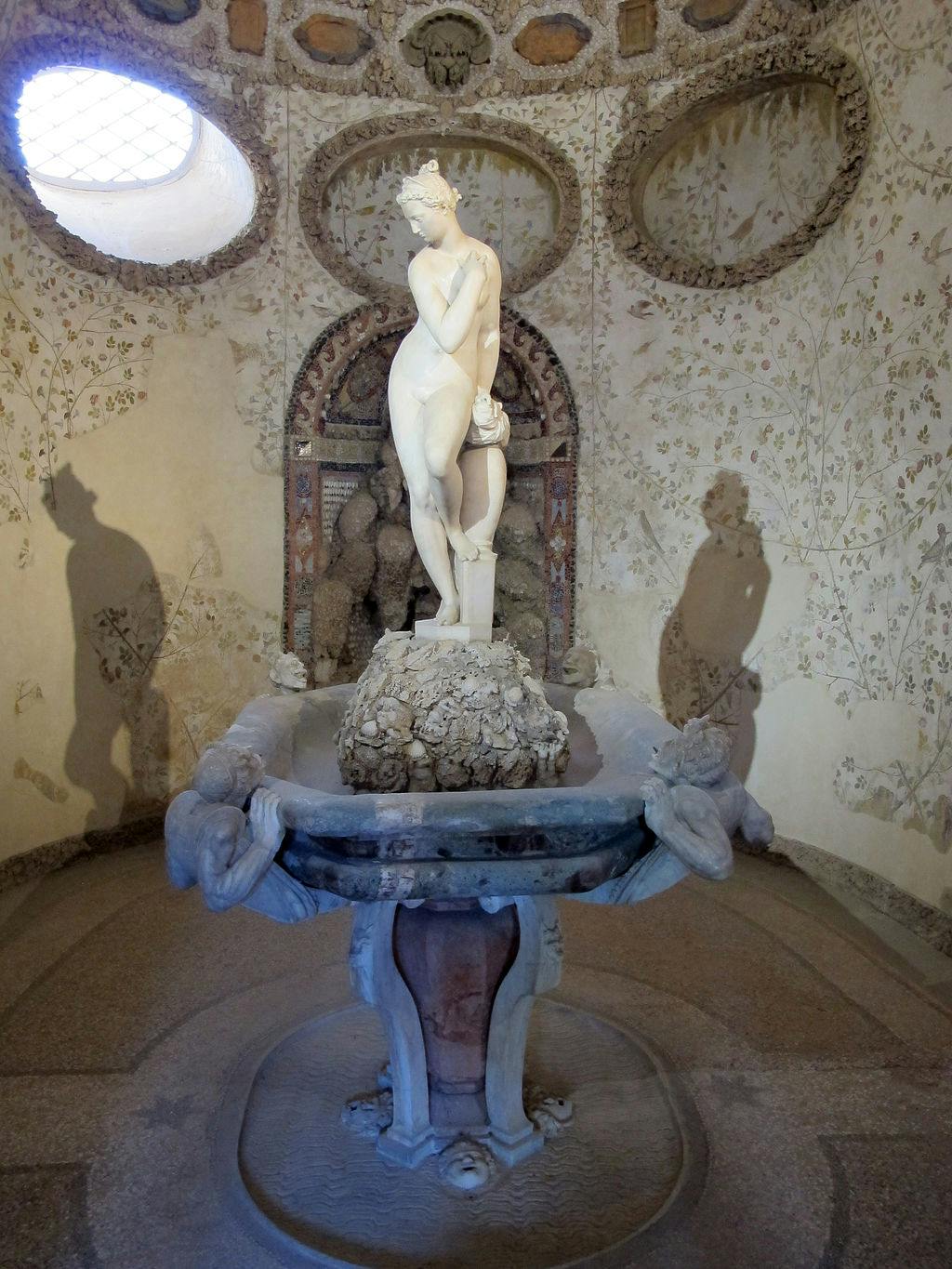Bathing Venus
Giambologna (Douai 1529 - Florence 1608)
The theme of the deity rising from the bath was widespread in garden sculpture, especially to adorn fountains. In this work, the sinuous pose of Venus is striking, inviting one to walk around the statue to observe it from all points of view. It is a masterful interpretation of the serpentine figure typical of Mannerism, which Giambologna skilfully mastered in many other works. The octagonal plinth on which the goddess rests her feet alludes precisely to the theory of the eight main views one can have of a sculpture by walking around it. The rotation of the head and the delicate modelling could be taken from the “Venus de’ Medici”, a work given by Alfonso d’Este to Ferdinando de’ Medici in 1575 and transferred to Florence only in 1677.
The work by Giambologna, mentioned by Raffaello Borghini and Filippo Baldinucci, probably dates back to 1573, but the fountain on which it is currently located was not built until 1593. The Venus was therefore not intended for this destination (Buontalenti Grotto) from the beginning, which was a later addition. The basin is made of African green marble and “Portasanta” red marble, with four white marble masks, while the central rock on which Venus stands is encrusted with sponges, quartz and shells, materials found in the walls of the Grotto, to simulate concretions of natural origin.
D.Heikamp, in G. Capecchi, D. Heikamp, A. Fara, V. Saladino, Palazzo Pitti. La reggia rivelata, Catalogo della mostra (Firenze, Palazzo Pitti, 7 dicembre 2003-31 maggio 2004), Firenze 2003 n. 186, p. 654
Buontalenti Grotto (Grotta di Buontalenti)
Giorgio Vasari (Arezzo 1511 – 1574 Firenze), Bernardo Buontalenti (Firenze 1531 – 1608), Baccio Bandinelli (Firenze 1493 – 1560), Vincenzo de’ Rossi (Fiesole 1525 – Firenze 1587), Giambologna (Douai 1529 – Firenze 1608)
